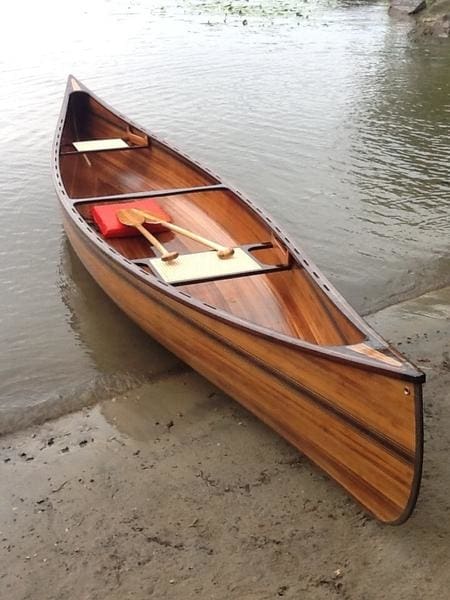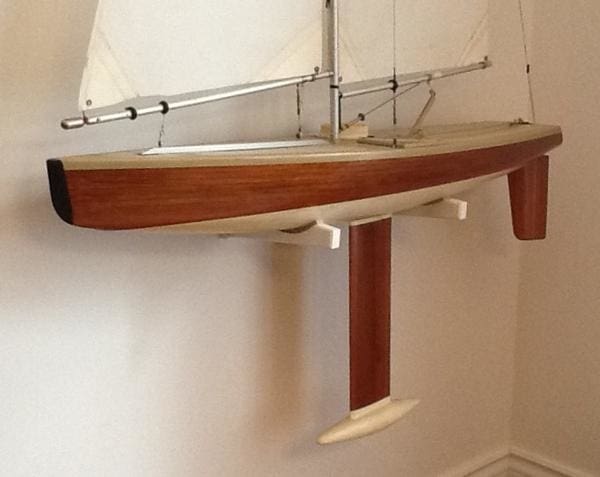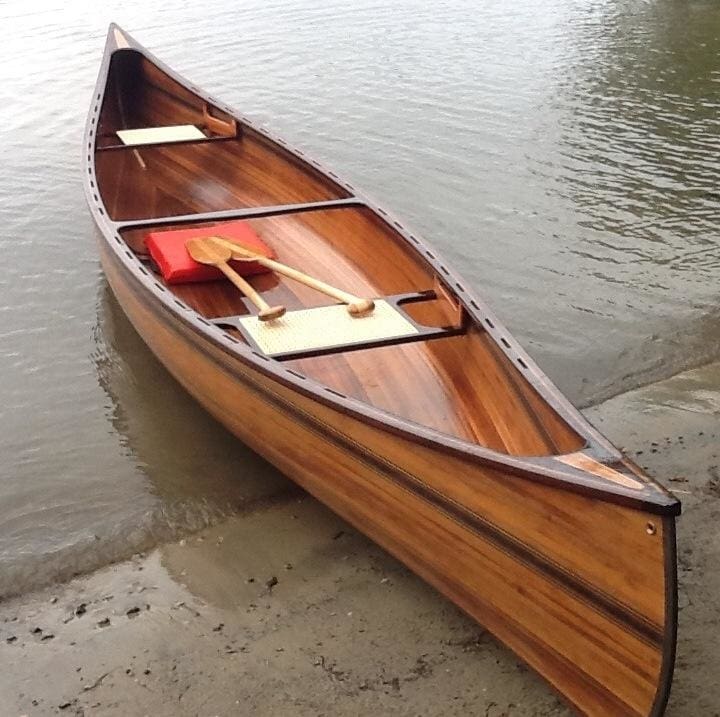Mark Whittaker's Prospector: From Inspiration to Launch Day
Stirrings
If there was a single moment that triggered and opened up the appeal of canoeing (and construction of same) for me, it was watching Bill Mason's face as he took me through the basics in his film for the NFB: Path of the Paddle.
There was such serenity, harmony, confidence and contentment wrapped in that quiet smile as he took a beaten and bent red canvas-covered Chestnut Prospector through its paces on the deep, rocky, crystal pools on Lake Superior's north shore. Actually it was more like a repertoire of dance.
The second "trigger" was a series of trips, three days up to a week, in Quebec's La Verendrye park, which included things like camping on a remote pine-covered flat rock island on a thick mattress of needles. Rounding a bend for a face to face with a moose, coming across a loon's nest.
The third was Ted's book, Canoecraft. I turned that into dog-eared manuscript in about a week! It was all there. Working with wood and new composite technology to produce something classic, functional, and visually pleasing.
So after some passing distractions... Like raising a brood, and 25 years of sailing on Lake Champlain, the "build a boat" bug reemerged and, this time, I got on with it!
O.K., So Now What?
My 'going in' position, as it were, was to keep it simple. Let the material and form do the talking.
I was going to be in cabinetmaker, not carpenter, mode for this job. And I imagined that wherever I touched or moved my hand over it, there would be no corners, ridges or sharp interruptions to the movement of my hand. There would be a visual and tactile flow to it.
The first decision was what canoe. What else, as an homage to Bill, than the Prospector?
Next was the no-staple route. Call me oversensitive but I couldn't see myself banging these sharp things into those soft curves. And then there was the removal and covering up the 'intrusions' ... a lot of work requiring more skills and persistent patience than I probably had to do the job well.
So my brain spun around a bit and I came up with something I thought might work.
The Gulliver Wedgie
You might have seen this somewhere else, but I hadn't. So here it is anyway: Canadian Tire tie-downs in two pieces at each station with one end of each piece secured below the sheerline on either side. The two pieces come up over the template and are tensioned with the cam to hold the strips in place.
To provide additional localized compression beyond the strap's capability, I cut a kazillion small pine wedges which could be pushed under the strap where necessary. Additional pressure was provided by tapping in more wedges over the first (my canoe was sounding like a banjo on occasion).
The next three photos show how this works. One bonus is that you can preload the rig with up to six strips held in place a few inches above the working area. The receiving cove is epoxied (A syringe is essential) a new strip is moved down and wiggled into place. If any point is not snug with the template, just tap in a wedge or three. And if there is a longtitudinal gap, use the tried and true 'L' clamp, but I can pretty well guarantee that you won't need this until you're maybe nearing the football zone.

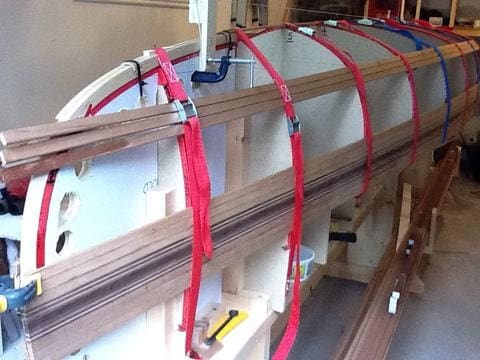
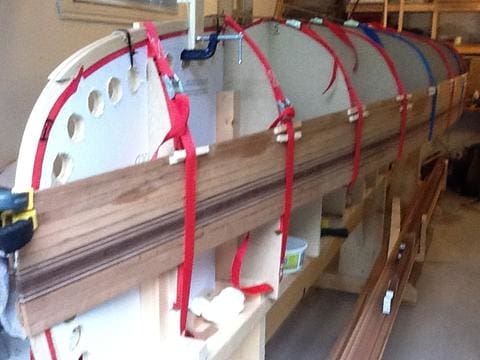
Here is a close up of the wedgies in action.

Next, with the hull nicely sanded, I laid up the glass.
I had good saturation but was less sure about how even my coverage was. So, using shop towelling and a foam roller, I was able to blot and remove surplus resin.
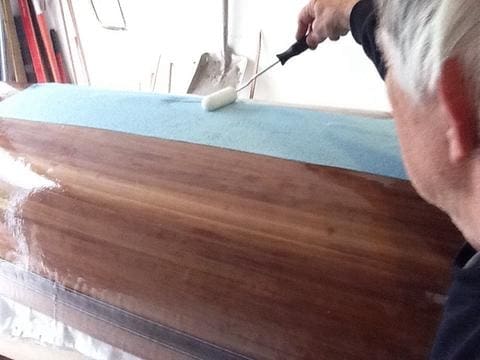
Giving me a nice even saturated weave finish.

From then on, I pretty well did it by the book, adding a couple of my own finishing touches.
Centre Thwart
Bolting the thwart under the gunwale wasn't compatible with with my 'hands on' test so I dovetailed and pegged it into the inner gunwhale strip to bring the wood level.
This is the thwart, upside down.
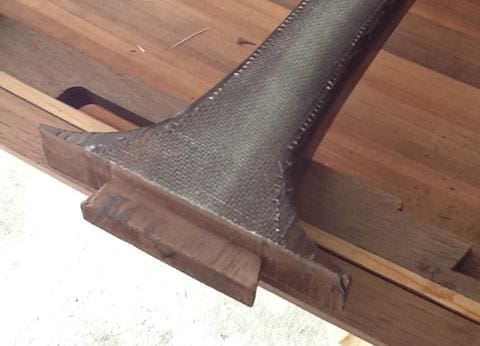
Which is flipped over and epoxied into the gunwale female dovetail...
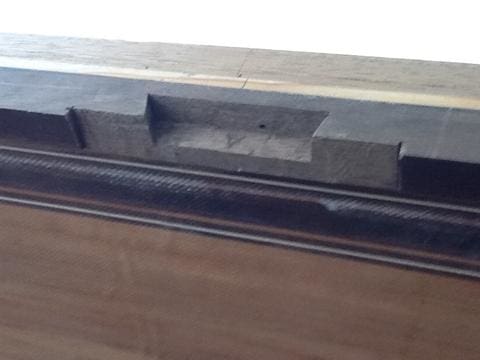
And pegged...
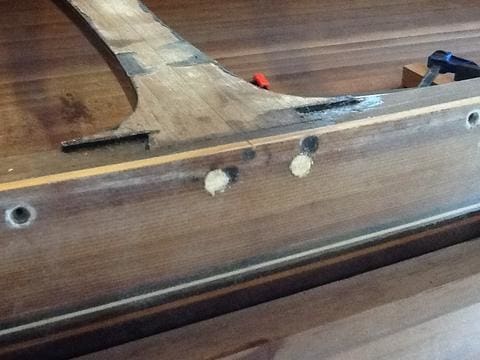
Then cleaned up to look like this.
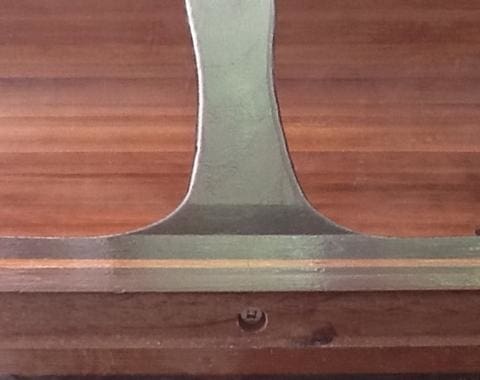
Painter Fairlead
I didn't want to attach anything to the stem so I machined this insert out of a chunk of bronze rod I had hanging around from my miniature steam engine days.
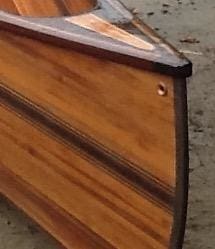
And Finally, the Paddle from the Scrap Bin
Blade glassed with Kevlar tip protection.

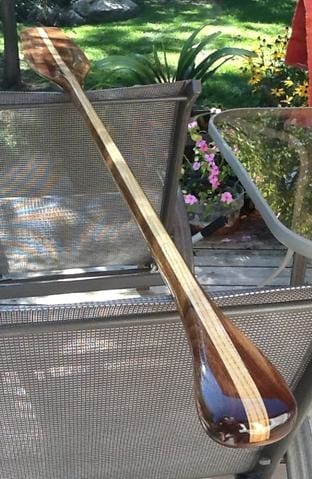
What's a Launch Without a Dedication?
We call her Dot, after my dear departed mum who was partial to the odd Guinness. Hence the appropriate deviation from the champagne routine.
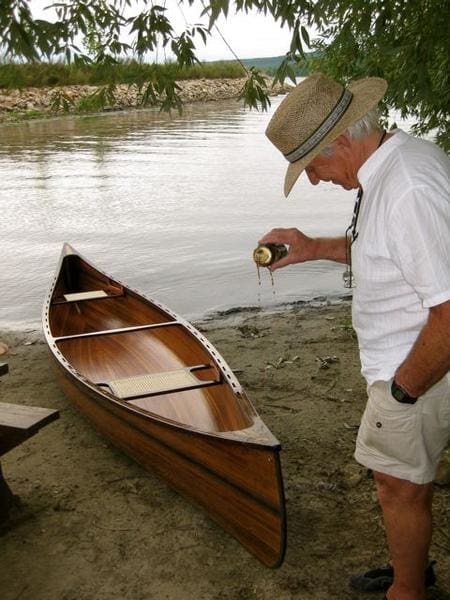
Did I Build Another Boat Yet?
Sure. Another stripper. A one meter long, wind-powered sloop with radio control. With the same techniques and material as its big cousin.
We all use similar techniques building our boats. This has been a humble offering of where a builder has digressed a tad. That's what is so great and personal about this kind of endeavour. I hope it will be useful/motivational.
